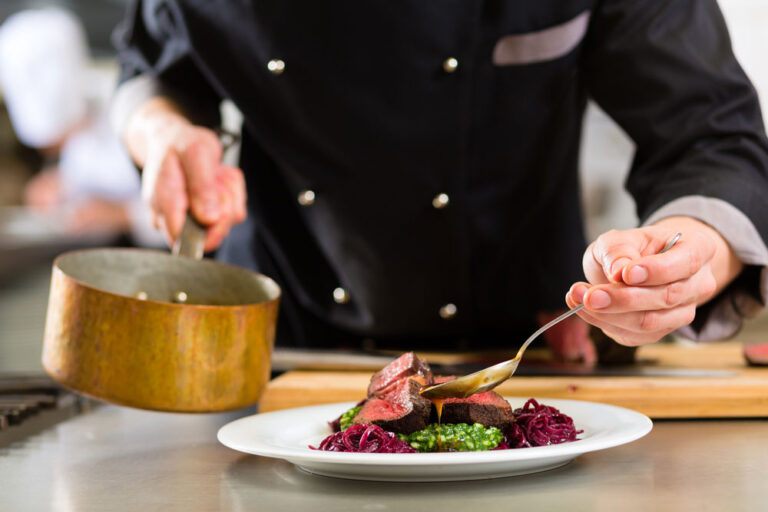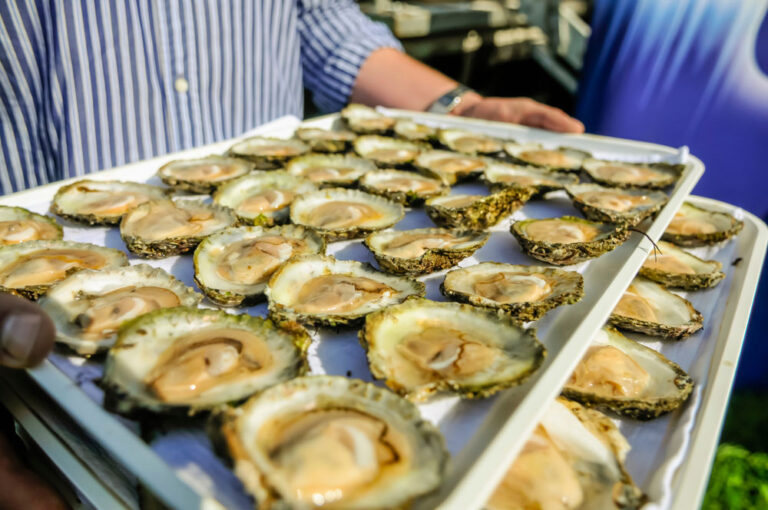Introduction to Cabbage in Ireland
Cabbage, a staple of Irish cuisine, is more than just a vegetable; it represents resilience, sustenance, and cultural heritage. This leafy green, known for its hardiness and nutritional value, has been a cornerstone of the Irish diet for centuries. Its significance extends beyond the kitchen, reflecting Ireland’s agricultural history and the adaptability of its people.
Ireland’s climate, characterized by its mild temperatures and ample rainfall, is ideal for growing cabbage. This crop thrives in the cool, damp conditions that are typical of the Irish countryside. Because of its robustness and ease of cultivation, cabbage quickly became a vital crop for Irish farmers. Its ability to grow in less-than-ideal soil conditions and its resistance to frost made it a reliable food source, ensuring it could be harvested nearly year-round.
Cabbage’s journey to Ireland is intertwined with the broader history of European agriculture. Believed to have been domesticated over 4,000 years ago in the Mediterranean region, cabbage spread across Europe through trade and migration. By the early Middle Ages, it had reached the British Isles, where it found a welcoming environment in Ireland.
In the context of Irish history, cabbage gained prominence during periods of economic hardship and food scarcity. During the Great Famine of the 1840s, when potato crops were devastated by blight, cabbage and other hardy vegetables played a crucial role in preventing starvation for many. Although not as calorie-dense as potatoes, cabbage provided essential vitamins and minerals, contributing to the survival of the population.
Beyond its role in sustenance, cabbage is deeply embedded in Irish culinary traditions. It is a key ingredient in iconic dishes such as colcannon (mashed potatoes and cabbage) and bacon and cabbage. These dishes are not only beloved for their flavors but also cherished as part of the national identity, often served during significant cultural and family events.
Historical Context of Cabbage in Ireland
Cabbage’s journey to Ireland is closely tied to the broader history of European agriculture and the migration of crops. Originating in the Mediterranean region, cabbage was domesticated over 4,000 years ago and gradually spread across Europe through trade routes and population movements. By the early Middle Ages, it had reached the British Isles, where it quickly found a hospitable environment in Ireland’s fertile and temperate landscape.
In medieval Ireland, cabbage became an essential crop for several reasons. Its ability to grow in a variety of soil conditions, including poor and rocky terrain, made it accessible to a wide range of farmers. Additionally, cabbage’s resilience to frost and ability to thrive in the cool, damp Irish climate meant it could be cultivated almost year-round, providing a steady food source even during the harsh winter months.
The versatility of cabbage also contributed to its popularity. It could be eaten raw, cooked, or preserved through methods like pickling and fermenting, which were crucial for ensuring food supplies during the winter. This adaptability made cabbage a cornerstone of the medieval Irish diet, supporting the population’s nutritional needs alongside other staples like barley and oats.
Cabbage played a particularly vital role during periods of hardship. The Great Famine of the 1840s, caused by the widespread failure of the potato crop due to blight, is one of the most significant events in Irish history. During this time, the reliance on potatoes was so profound that their sudden unavailability led to a catastrophic food crisis. While cabbage could not fully replace the caloric density of potatoes, it provided essential vitamins and nutrients that helped sustain those who had access to it. Its presence in the diet was a crucial factor in mitigating some of the famine’s devastating effects.
Furthermore, cabbage’s role in Irish culture is intertwined with social and economic aspects. In rural communities, it was common for families to grow cabbage in small kitchen gardens, ensuring a reliable supply of fresh vegetables. This practice fostered a sense of self-sufficiency and community resilience. Even as Ireland underwent industrialization and urbanization, cabbage remained a staple in both rural and urban settings.
As the centuries progressed, cabbage maintained its place in Irish cuisine, evolving with culinary trends while preserving its traditional significance. It became a symbol of Irish resilience and resourcefulness, representing the ability to thrive despite adversity.
Culinary Significance of Cabbage in Ireland
Cabbage has long been a cornerstone of Irish cuisine, celebrated for its versatility and nutritional value. It features prominently in numerous traditional dishes, which are not only staples of everyday meals but also cherished components of Irish cultural heritage. These dishes highlight the ingenuity of Irish cooks in utilizing local, readily available ingredients to create hearty and flavorful meals.
One of the most iconic Irish dishes that prominently features cabbage is bacon and cabbage. This simple yet satisfying dish combines boiled cabbage with slices of salted bacon, often accompanied by potatoes. The preparation is straightforward, allowing the flavors of the cabbage and bacon to shine through. Traditionally served with a parsley sauce, bacon and cabbage is a beloved comfort food, often enjoyed on St. Patrick’s Day and other significant occasions.
Another classic dish is colcannon, a comforting blend of mashed potatoes and cabbage, often mixed with butter, milk, and sometimes scallions or leeks. This dish is particularly associated with Halloween, where coins or other tokens might be hidden in the mash as part of festive traditions. Colcannon exemplifies how cabbage can elevate a simple dish, adding texture and flavor while also increasing its nutritional value.
Cabbage soup is another staple in Irish homes, particularly during the colder months. This hearty soup often includes ingredients like carrots, onions, potatoes, and sometimes ham or sausage, simmered together to create a warming and nutritious meal. The cabbage adds a distinctive flavor and texture, making the soup both filling and wholesome.
Beyond these traditional dishes, cabbage has found its place in modern Irish cuisine as well. Cabbage slaw, for instance, has become a popular side dish, especially when paired with seafood or barbecue. This modern twist on a classic ingredient demonstrates the versatility of cabbage, which can be used in both cooked and raw preparations to great effect.
Stuffed cabbage leaves, often filled with a mixture of minced meat and rice, are another example of how cabbage continues to inspire contemporary Irish cooks. This dish, which has roots in various European culinary traditions, showcases the adaptability of cabbage and its ability to absorb and complement a wide range of flavors.
The use of cabbage in these dishes underscores its importance not only as a dietary staple but also as a symbol of Irish culinary ingenuity. Its ability to thrive in the Irish climate, coupled with its versatility in the kitchen, has made it an enduring and cherished component of the national diet.

Nutritional Benefits of Cabbage
Cabbage is not only a versatile and delicious vegetable but also a powerhouse of nutrition, offering numerous health benefits that have contributed to its enduring popularity in Ireland and beyond. This humble vegetable is packed with essential vitamins, minerals, and other nutrients that support overall health and wellness, making it a valuable addition to any diet.
Rich in Vitamins and Minerals: Cabbage is a rich source of several vital vitamins, including vitamin C, vitamin K, and various B vitamins. Vitamin C, an antioxidant, plays a crucial role in boosting the immune system, promoting healthy skin, and aiding in the absorption of iron. Vitamin K is essential for blood clotting and bone health, while B vitamins support energy metabolism and brain function. Additionally, cabbage contains significant amounts of potassium, which helps regulate blood pressure, and calcium, important for maintaining strong bones and teeth.
High in Fiber: One of the key nutritional benefits of cabbage is its high fiber content. Dietary fiber is essential for maintaining a healthy digestive system, preventing constipation, and promoting regular bowel movements. A diet rich in fiber can also help lower cholesterol levels, reduce the risk of heart disease, and aid in weight management by promoting a feeling of fullness and reducing overall calorie intake.
Antioxidant Properties: Cabbage contains several antioxidants, including polyphenols and sulfur compounds, which help protect the body against oxidative stress and inflammation. These antioxidants can reduce the risk of chronic diseases such as heart disease, cancer, and neurodegenerative disorders. The presence of anthocyanins, particularly in red cabbage, has been linked to reduced inflammation and improved heart health.
Supports Heart Health: The combination of fiber, potassium, and antioxidants in cabbage makes it particularly beneficial for heart health. Fiber helps lower cholesterol levels, while potassium aids in maintaining healthy blood pressure. Antioxidants protect the cardiovascular system from oxidative damage and inflammation, further reducing the risk of heart disease.
Aids in Detoxification: Cabbage contains compounds like glucosinolates and sulfur, which support the body’s natural detoxification processes. These compounds help activate enzymes involved in detoxifying harmful substances and promoting liver health. Regular consumption of cabbage can aid in the elimination of toxins from the body, supporting overall health and well-being.
Anti-Inflammatory Effects: Chronic inflammation is a contributing factor to many diseases, including arthritis, heart disease, and diabetes. The antioxidants and anti-inflammatory compounds found in cabbage can help reduce inflammation in the body, potentially lowering the risk of these chronic conditions.
Weight Management: Due to its low calorie and high fiber content, cabbage is an excellent food for those looking to manage their weight. It provides essential nutrients without adding excessive calories to the diet. The high fiber content also promotes satiety, helping to control appetite and reduce overall calorie intake.
The nutritional benefits of cabbage highlight its importance as a staple in the Irish diet. Its ability to provide essential nutrients while supporting overall health and wellness has ensured its place in traditional and modern Irish cuisine.
Cultural Significance of Cabbage in Ireland
Cabbage holds a prominent place in Irish culture, not just as a dietary staple but as a symbol of heritage, resilience, and community. This unassuming vegetable is woven into the fabric of Irish traditions, festivals, and folklore, reflecting its deep-rooted significance in the lives of the Irish people.
Festivals and Celebrations: One of the most notable instances where cabbage takes center stage is during St. Patrick’s Day celebrations. Alongside potatoes and corned beef (especially in Irish-American traditions), cabbage is a key ingredient in festive meals. The traditional dish of bacon and cabbage is often served during this time, symbolizing the simplicity and heartiness of Irish cuisine. The use of cabbage in these celebratory meals underscores its role as a comfort food that brings people together.
Folklore and Superstitions: Cabbage is also steeped in Irish folklore and superstitions. In some rural areas, it was believed that burying a cabbage stump at the end of the harvest would ensure a good crop the following year. Cabbage was also associated with various Halloween traditions. In one such custom, young women would place a cabbage stem over their door on Halloween night in hopes of seeing their future husband in a dream. These folkloric practices highlight the cultural importance of cabbage beyond its culinary uses.
Symbol of Resilience: Historically, cabbage symbolizes resilience and endurance, traits that resonate deeply with the Irish experience. During times of famine and economic hardship, cabbage was a reliable source of nutrition when other crops failed. Its ability to grow in poor soil and harsh weather conditions made it a lifeline for many Irish families. This resilience has turned cabbage into a metaphor for the Irish spirit—resourceful, enduring, and capable of thriving under adversity.
Community and Self-Sufficiency: In rural Ireland, cabbage growing was often a communal activity, with families tending to their kitchen gardens and sharing produce with neighbors. This practice fostered a sense of self-sufficiency and community solidarity. The communal aspect of cabbage cultivation and consumption reinforced social bonds and ensured that even the poorest households had access to fresh vegetables.
Modern-Day Relevance: Today, cabbage continues to be a staple in Irish kitchens, reflecting both tradition and modern culinary trends. While it remains a key ingredient in classic dishes, contemporary Irish chefs are also finding new ways to incorporate cabbage into innovative recipes, showcasing its versatility. Cabbage is celebrated not only for its historical significance but also for its nutritional benefits and culinary potential.
Educational Initiatives: In recent years, there has been a resurgence of interest in traditional Irish foods and sustainable farming practices. Educational initiatives and community gardens often highlight cabbage as a symbol of Ireland’s agricultural heritage. These programs aim to reconnect people with traditional ways of growing and preparing food, emphasizing the importance of self-reliance and healthy eating.
In conclusion, cabbage is much more than a mere vegetable in Ireland. It is a cultural icon, a symbol of resilience, and a testament to the ingenuity of Irish cuisine. From historical hardships to modern culinary innovations, cabbage has remained a steadfast part of Irish life, nourishing both body and spirit. Through its enduring presence in Irish traditions, festivals, and folklore, cabbage continues to hold a special place in the hearts and kitchens of the Irish people.
Try some of our favorite cabbage recipes:
IRISH BACON AND CABBAGE DUMPLINGS







